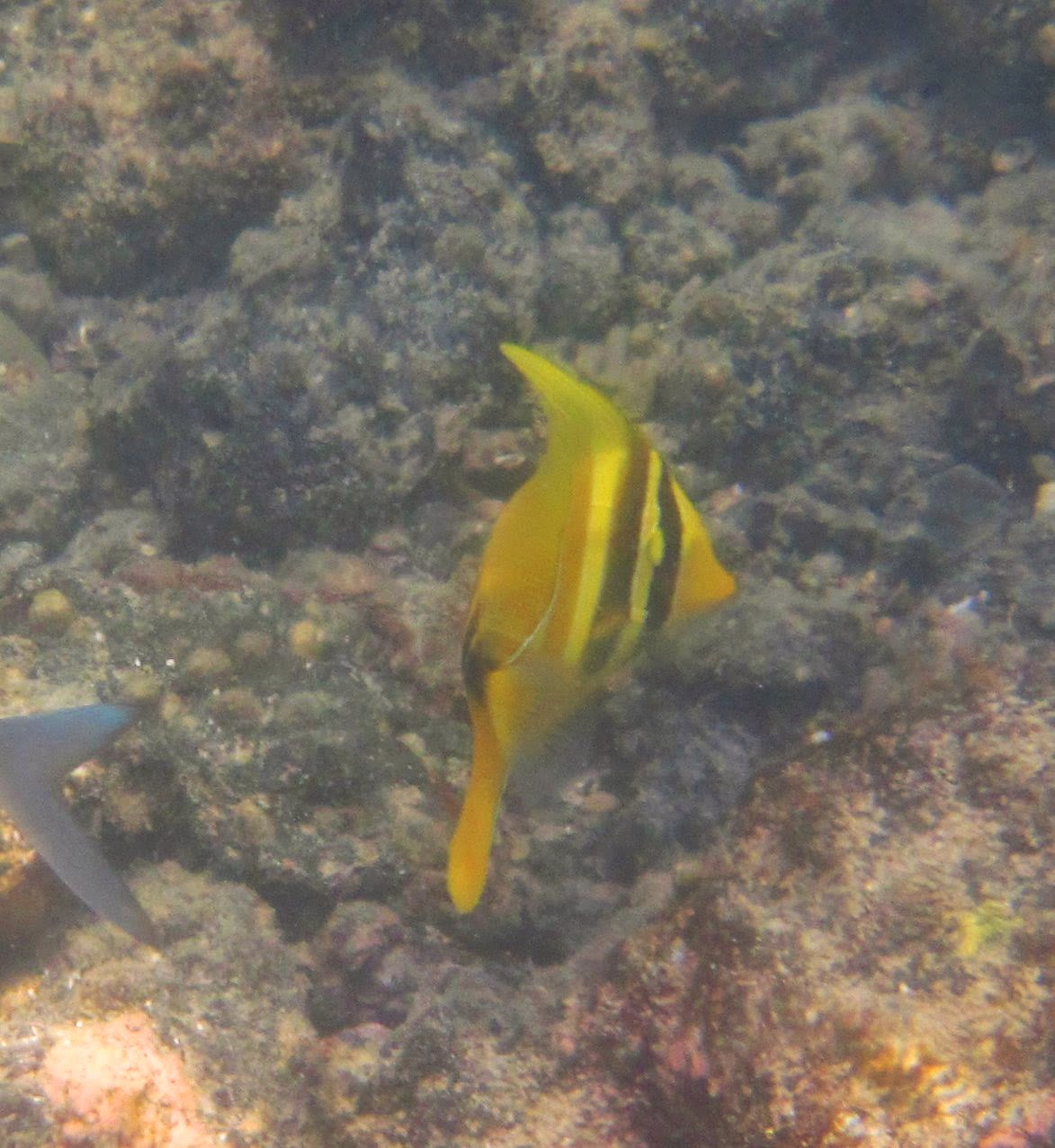 |
| High tides have flooded the Hilton Waikoloa lagoon. |
Yesterday we went to the Hilton Waikoloa. This involved looking at parrots and incarcerated dolphins (I wonder why I feel more sorry for the dolphins than the macaws.) and playing in the pools. Eventually the agenda led us to the best bird feeder for reef fish on this side of the island. Which is to say the man made lagoon in which tourists frolic on paddle boats when they are not lounging under palapas sipping expensive beverages.
"Bird feeder?", you ask. Well I have to justify my feelings toward this lagoon somehow. At the far end, it is possible for fish to breech the low dike and gain entrance to the salt water lagoon, which has never been
 |
| Highfin Coralfish |
Before entering the lagoon, Charles, Sofia and I were forced to climb down the bank and wade around the lounges that were six inches deep in water. Tides have been higher lately and one is forced to wonder if the rising sea level, a result of global warming, is affecting the low lying areas of Hawaii just as it is flooding Venice and Miami.
Finally gaining access to the lagoon we paddled around and saw some pretty good fish, including immature Lagoon and Rectangular Triggerfish and a couple juvenile Night Sergeants that retained yellow
 |
| Saifin Tang imm. |
On our last swoop near the bridge, Charles suddenly became excited, pointing at a small yellow fish. It was about 4 cm in length, yellow with light vertical stripes, and occasionally raised its dorsal fin. We could tell that it had a dark caudal peduncle and a couple dark stripes near the face. We chased this fast moving little fellow around through the cool turbid water and got a couple pictures.
A couple hours later, back at the ranch, I told Sandra we had seen a juvenile Sailfin Tang. While we were getting the family settled for dinner, she took a quick look at the fish book and announced that the juvenile sailfin looks identical to adult. This got me quite excited. Certainly lots of immature fish look identical. Including the closely related Yellow Tang. Instead of looking at
 |
| Sailfin Tang juvenile, Zebrasoma veliferum Waikoloa Hilton |
So while we chowed down on hamburgers and diet cokes, we looked at coralfish, that interesting group of butterflyfish that live at the epicenter of fish development. With out looking at our pictures, we decided that the High fin Coralfish, Coradion altivelis, was a possible match. Bound to be a state record!
Following dinner I had a chance to look at the Ultimate Guide and see that the immature Sailfin Tang is a lot different from the adult. In fact, in its earliest form it looks a lot like a Longfin Batfish...really long dorsal and ventral fins. What we saw was a more advanced version, intermediate version. John Hoover tells us that this is a very rare sighting, that when these juveniles are seen they are often in calm turbid water, like Kane'ohe Bay. Or the Lagoon at the Waikoloa Hilton. He does not specifically mention the Japanese tourist on the water bicycle.
jeff
No comments:
Post a Comment